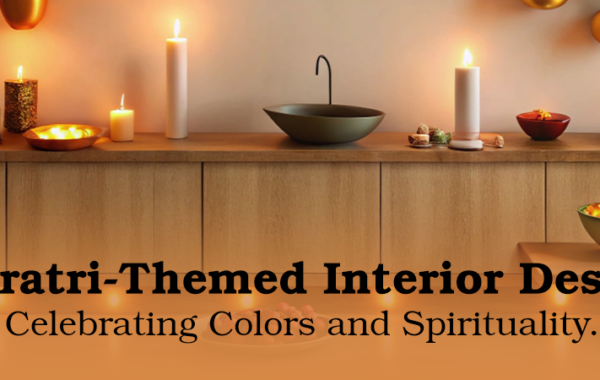1. Introduction
Building decorations require proper color selection due to their vital importance in creating house ambiance. Colors contribute to creating rooms that feel pleasant with a soothing atmosphere and joyful ambiance and chilly ambiance when desired. Hot weather conditions create a circumstance in which the selection of home colors becomes vital for regulating indoor temperatures. Yes! Combatting heat in your house becomes possible with the selection of proper color schemes.
A house must have reflective colors that deflect sunlight while avoiding heat retention at times when the weather is warm and the sun shines brightly. Specific colors possess the ability to extend space and create fresh soothing areas within your home. The discussion of suitable color combinations for residences in tropical or hot regions forms the foundation of this blog. The appropriate colors serve as protective measures to cool your house while adding visual attractiveness..
2. Why Color Matters in Hot Weather Regions
The appearance of colors in a space leads to emotional changes within the environment. Hot weather places can experience temperature variations from choosing appropriate colors which result in either heat reduction or intensity increase. Here’s how:
- Light colors act as reflectors by sending sunlight back into the air which minimizes room temperature.
- The establishment of dark color tones pulls heat toward the room by absorbing solar energy from light.
- Colors affect mood because blue gives a feeling of calmness yet red creates busyness.
People who reside in warm areas should select colors which create a sensation of coolness and freshness combined with spaciousness in their homes. Selecting a suitable color combination results in significant differences in indoor conditions!
3. Top Color Palettes Ideal for Warm Climates
Now let’s look at the best color palettes you can use if you live in a place that’s sunny and hot.
A. Cool Neutrals
Cool neutrals are soft and light colors. These colors blend into the background without causing any visual disturbance while promoting serenity.
- Colors to use: Off-white and beige together with ivory light gray and taupe functions as appropriate color options.
- Where to use: The color palette of off-white, beige, ivory, light gray and taupe should be applied in walls and ceilings alongside floors and large furniture pieces.
- Why they’re good:
- They don’t absorb heat
- They go well with any style
- They make rooms feel big and clean
The color scheme works best when you desire an easygoing feeling together with a gentle yet cool atmosphere in your home.
B. Soft Blues and Sea Greens
These colors are like the ocean and sky. Just looking at them can make you feel cooler!
- Colors to use: Sky blue, baby blue, sea green, teal, light aqua
- Where to use: Bedrooms, bathrooms, and living rooms
- Why they’re good:
- They feel fresh and peaceful
- They make small rooms feel open
- They go well with white or beige
Cushions with sea green colors combined with soft blue wall paint creates a beachlike atmosphere in your room.
C. Earthy Tones with a Light Touch
Natural earth tones derive their shades from sand and clay as well as stone. Soft blues in painting appear warm but remain non-hot temperatures in their appearance.
- Colors to use: Light terracotta, sand, light brown, clay, cream
- Where to use: Kitchens, balconies, entryways
- Why they’re good:
- They add a soft natural look
- They go well with wooden furniture
- They feel cozy but not too warm
The friendly and natural atmosphere in your home gets better when you use earth-toned colors.
D. Pastel Shades
Pastels are light and soft colors. They are playful but gentle.
- Colors to use: The painting palette should include Mint green, powder blue, blush pink, pale yellow, lavender.
- Where to use: The intersection of Kid’s rooms and living rooms and bathrooms represents the proper areas for these colors to work.
- Why they’re good:
- They are not too bright
- They make rooms feel soft and happy
- They work well with white or gray
Pastels add a touch of color without making your house feel hot or crowded.
E. Crisp Whites with Accents
White is always cool and clean. You can pair it with one or two bright colors to make your room look fresh and fun.
- Base color: Pure white
- Accent colors: Navy blue, lemon yellow, teal, coral
- Where to use: Living rooms, dining rooms, kitchens
- Why they’re good:
- White reflects the most heat
- Accent colors add interest without making it hot
- Perfect for beach-style homes
This palette is great for people who like modern, clean, and bright spaces.
4. Tips on Using Color Effectively in Warm Homes
It’s not just about what colors you choose — it’s also about how you use them. Here are some smart tips:
- Choose matte or satin finishes: The paint finishes of matte or satin provide a non-brilliancy effect to minimize sunlight reflections.
- Use light-colored curtains and rugs: The use of light curtains combined with rugs will help keep the room bright as well as cool.
- Use natural materials with your colors:
- Marble for floors or countertops
- Linen for curtains and sofa covers
- Bamboo for decor items or furniture
- Let in natural light: Choose colors that look nice in sunlight, and keep windows open when you can.
These tips help you use colors in a smart way to make your home feel better in hot weather.
5. Mistakes to Avoid
Even with the best colors, you can make small mistakes. Here are some things to avoid:
- The application of multiple dark-colored shades results in reduced space and increased heat levels in rooms.
- Placing numerous colors inside a single room across its surfaces results in confused visual perception and makes the area look unorganized.
- Light colors should be used on areas that receive too much sunlight exposure.
The concept should remain basic while maintaining a clean and bright approach. A fresh home atmosphere with tranquility results best from these methods.
6. Final Thoughts
Let’s remember the best color ideas for hot weather homes:
- Select your interior palette from off-white together with pastel blue and mint green due to their light-toned qualities.
- The combination of natural lighting and tender fabric materials should illuminate your rooms.
- Make an effort to let your home present an open welcoming atmosphere.
The cool and relaxing atmosphere your house experiences results directly from these color combinations. It is safe to integrate various pastel shades. Consulting with a home designer will help you select the suitable colors that match your personal taste if you need assistance.
FAQs
Light colors like white, beige, and light blue reflect heat and help keep rooms cooler.
You can, but use them in small amounts. Too much dark color will make the room feel hot.
Yes, white is great because it reflects sunlight and makes the room feel bigger and cooler.
Pastels are soft and light. They keep the space cheerful without making it hot or heavy.
Some great combos are:
White and baby blue
Beige and mint green
Off-white and blush pink
Sand and sky blue
These color pairs look cool and feel light, perfect for homes in warm places.


